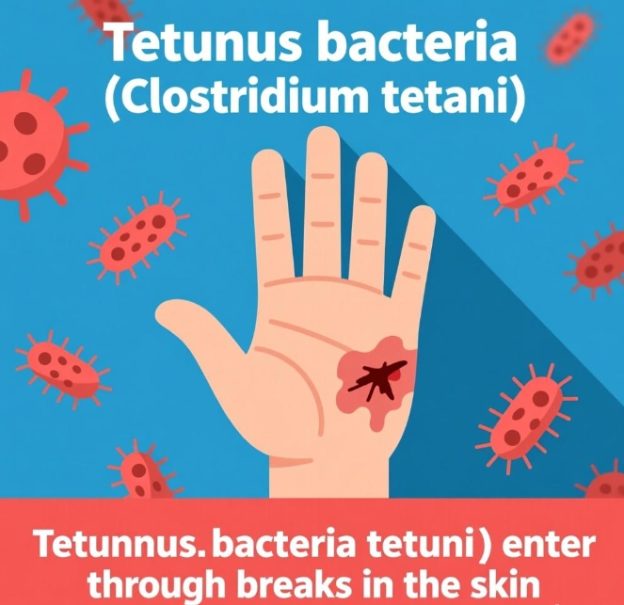Tetanus is a life-threatening toxin-mediated neurological disease that usually begins 48 hours to 2 weeks after Clostridium tetani spores enter a wound. Classic symptoms progress in a descending pattern:
- Lockjaw (trismus)
Stiffness and painful spasms of the jaw muscles make it hard to open the mouth, eat, or speak; this is often the first sign . - Facial and neck rigidity
Fixed “sardonic” smile (risus sardonicus) and difficulty swallowing develop as facial and pharyngeal muscles are recruited . - Generalized muscle spasms
Paroxysmal, painful contractions spread to the trunk and limbs; minor stimuli such as noise, light, or touch can trigger spasms that last seconds to minutes and may cause apnea or fractures . - Opisthotonos
Sustained arching of the back with flexed arms and extended legs is highly characteristic of severe disease . - Autonomic instability
Episodes of hypertension, tachycardia, sweating, and fever alternate with hypotension and bradycardia; cardiac arrhythmia or arrest can occur . - Abdominal wall rigidity
Continuous board-like rigidity can mimic an acute abdomen, sometimes leading to unnecessary surgery before the correct diagnosis is recognized . - Complication markers
Laryngeal spasm causes asphyxia; prolonged spasms lead to rhabdomyolysis, hyperthermia, and multi-organ failure .
Patients remain fully conscious unless hypoxia supervenes. Any wound-associated stiffness or spasm mandates immediate hospital care, human tetanus immune globulin, wound debridement, and supportive ventilation .
| Symptom | Early Stage | Advanced/Threatening |
|---|---|---|
| Jaw | Stiffness, mild trismus | Complete lockjaw |
| Face | Risus sardonicus | Masseter spasms |
| Trunk | Neck/back stiffness | Opisthotonos, fractures |
| Spasm trigger | Minor touch/noise | Autonomic storms |
| Breathing | Normal | Apnea during spasms |
| Vitals | Stable | Hypertension → arrest |
